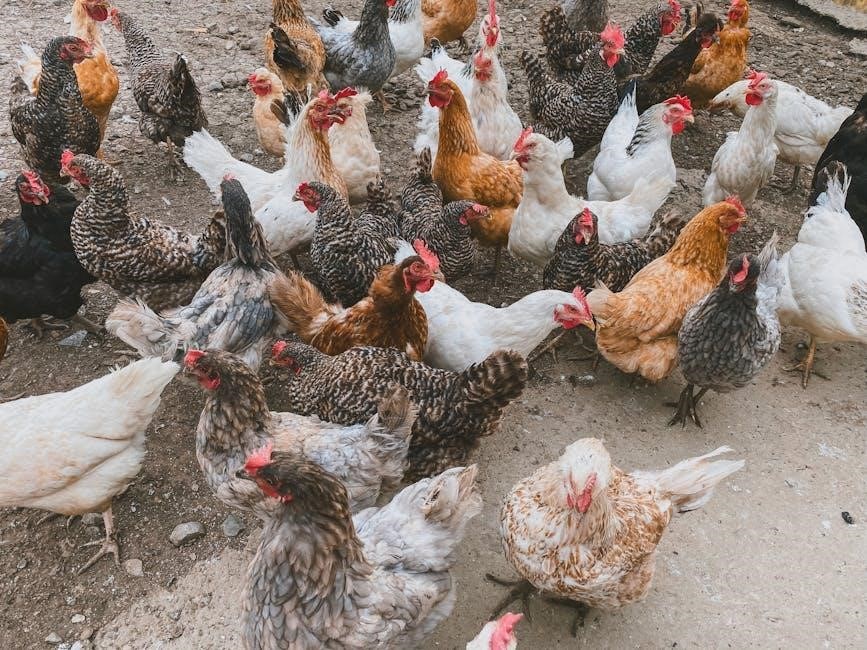
Getting Started with Raising Chickens
Embarking on the journey of raising chickens begins with a pivotal decision. Do you envision nurturing chicks from day one, or integrating older hens into your backyard setup? The choice sets the stage for your poultry-keeping adventure.
Deciding on Your Flock: Eggs, Chicks, or Hens
The initial step involves a crucial decision: will you start with hatching eggs, adorable chicks, or more mature hens? Each option presents unique advantages and challenges. Hatching eggs allows you to witness the miracle of life, requiring an incubator and careful monitoring. Chicks, while undeniably cute, demand vigilant care, warmth, and protection during their vulnerable early weeks. They need specialized feed and a secure brooder setup.
Opting for young adult hens offers an immediate egg supply and bypasses the chick-rearing phase. However, established hens may take time to adjust to their new environment and establish their pecking order. Consider your time commitment, resources, and desired level of involvement when making this important choice. Research local breeders or hatcheries to ensure you acquire healthy birds suited to your climate and goals. Ultimately, the decision shapes your entire chicken-raising experience.

Planning and Preparation
Successful chicken keeping hinges on thorough planning. Determining brood size, assessing space, and understanding local ordinances are crucial. Proper preparation ensures a healthy, happy, and compliant flock from the beginning.
Determining the Size of Your Brood
Deciding on the number of chickens to raise is a critical first step. Consider your egg consumption needs. A smaller family might only require a few hens, while a larger family or those wishing to share eggs with neighbors may need more. Think about the available space you have; overcrowding can lead to stress and disease.
Research the egg-laying capabilities of different breeds. Some breeds are prolific layers, while others lay fewer eggs. Start small and gradually increase your flock size as you gain experience. Remember, more chickens mean more work and resources.
Factor in potential losses due to predators or illness. Having a few extra hens can provide a buffer. Ultimately, the ideal brood size balances your needs, resources, and experience level, ensuring a manageable and enjoyable experience.
Surveying Your Available Space
Before acquiring your flock, meticulously assess your outdoor space. Chickens require both a coop and an outdoor run for foraging and exercise. Ensure the coop provides adequate square footage per bird. Overcrowding leads to unsanitary conditions and behavioral problems.
The run should be spacious enough for the chickens to roam freely and exhibit natural behaviors like scratching and dust bathing. Consider the terrain. Is it level and well-drained, or will you need to make modifications?
Evaluate sun exposure and shade availability. Chickens need both sun and shade for temperature regulation. Factor in potential expansion. If you plan to increase your flock in the future, ensure you have enough space to accommodate additional birds. Careful space assessment is crucial for a healthy and happy flock.
Checking Local Ordinances and Regulations
Prior to constructing a coop or acquiring chickens, it is paramount to investigate local ordinances and regulations pertaining to backyard poultry. Many municipalities have specific rules regarding the number of chickens allowed per property, coop setback distances from property lines, and restrictions on roosters.
Failure to comply with these regulations can result in fines, legal action, or even the requirement to remove your flock. Contact your city hall, county clerk’s office, or homeowner’s association to obtain detailed information about applicable rules.
Pay close attention to any restrictions on noise levels, waste disposal, and potential nuisance complaints from neighbors. It is also wise to inform your neighbors of your intentions to raise chickens, fostering positive relationships and mitigating potential conflicts. Compliance ensures responsible and harmonious poultry keeping.

Chicken Coop Essentials
A secure and well-designed chicken coop is vital. It must offer ample space, proper ventilation, and robust predator protection. This ensures the health and safety of your feathered friends.
Adequate Space and Ventilation
Providing adequate space within the chicken coop is paramount for the well-being of your flock. Overcrowding can lead to stress, feather-pecking, and the spread of diseases. Ensure each chicken has enough room to move freely, roost comfortably, and engage in natural behaviors.
Proper ventilation is equally crucial. A well-ventilated coop prevents the build-up of harmful ammonia fumes from droppings, reduces moisture levels, and maintains a comfortable temperature year-round. Stale, damp air can lead to respiratory problems in chickens.
Design your coop with strategically placed vents near the roofline to allow for airflow without creating drafts directly on the chickens. Consider incorporating windows that can be opened and closed to regulate ventilation based on the weather. A balance between space and ventilation is essential for a healthy and happy flock.
Predator Protection Measures
Protecting your chickens from predators is a critical aspect of responsible chicken keeping. A secure coop is your first line of defense. Construct the coop with sturdy materials that predators cannot easily break through. Hardware cloth with a small mesh size should be used to enclose the coop and run, extending at least 12 inches below ground to prevent digging.
Secure all doors and windows with reliable latches that predators cannot manipulate. Consider adding an automatic coop door that closes at dusk and opens at dawn, providing an extra layer of protection when you are not present.
Be vigilant about potential threats in your area, such as foxes, raccoons, hawks, and dogs. Implement deterrents like motion-activated lights or noisemakers. Regularly inspect the coop for signs of damage and promptly repair any vulnerabilities. A proactive approach to predator control is essential for ensuring the safety of your flock.
Daily Chicken Care
Daily chicken care involves feeding and watering, opening the coop in the morning, and securing it at dusk. These consistent actions safeguard your flock’s well-being and ensure their safety.
Feeding and Watering Routine
Establishing a consistent feeding and watering routine is crucial for healthy chickens. Daily, provide fresh, clean water, ensuring it’s accessible throughout the day. Empty and refill water containers to prevent algae growth and bacteria. A reliable water source, like a chicken waterer, minimizes spills and contamination.
For feeding, offer a balanced diet appropriate for their age and stage of life. Chick starter feed is essential for chicks, while laying hens require a feed rich in calcium for strong eggshells. Monitor food consumption and adjust amounts as needed to avoid waste. Supplement their diet with treats like vegetable scraps, but in moderation, to maintain a balanced nutritional intake.
Ensure the food and water are easily accessible and placed in clean feeders and waterers to prevent the spread of disease. Observe your chickens daily to ensure they are eating and drinking normally.
Letting Chickens Out and Securing at Dusk
A consistent routine of letting chickens out in the morning and securing them at dusk is vital for their safety and well-being. In the morning, after sunrise, open the coop to allow your chickens access to their run or foraging area. This allows them to engage in natural behaviors like scratching, pecking, and dust bathing.
At dusk, as daylight fades, your chickens will instinctively return to the coop to roost. Ensure all chickens are inside before closing and securing the coop door. This protects them from nocturnal predators such as foxes, raccoons, and owls. Regularly inspect the coop for any potential entry points that predators could exploit. A secure coop is your best defense against nighttime threats.
Consider motion-activated lights near the coop to deter predators. A reliable routine will help your chickens feel safe and secure.

Chicken Nutrition
Providing a balanced diet with the correct protein levels for each growth stage is crucial. Supplement their feed with fresh water, grit, and oyster shells to promote proper digestion and eggshell strength.
Balanced Diet for Different Growth Stages
Chicken nutrition is a science as well as an art. Different life stages demand varying nutritional components. Chicks need a high-protein starter feed to fuel rapid growth. As they mature into pullets, a grower feed with less protein is more suitable, preventing overly rapid development. Laying hens require a layer feed rich in calcium to support egg production. A balanced diet ensures healthy growth, strong bones, and vibrant egg production. Remember that nutritional needs change as the chickens grow. It is also important to remember to adjust the chicken’s diet as the seasons change and provide them with a balanced diet. Monitoring their health and adjusting the diet accordingly. This ensures optimal health and productivity throughout their lives. Proper nutrition will help keep the chickens healthy and strong and make them more resistant to disease.
Providing Grit and Oyster Shells
Beyond balanced feed, chickens need grit and oyster shells to thrive. Grit, consisting of small stones, aids digestion. Since chickens lack teeth, they ingest grit, which helps grind food in the gizzard. This is particularly crucial for chickens that forage or consume whole grains. Oyster shells provide supplemental calcium, especially vital for laying hens. Calcium is essential for strong eggshells; without enough, hens may lay thin-shelled or even shell-less eggs. Offer grit and oyster shells in separate containers, allowing chickens to self-regulate their intake. Always have grit and oyster shells available. Proper digestion and sufficient calcium intake are vital for maintaining the overall health and productivity of your flock. This ensures that the hens can produce strong and healthy eggs.
Choosing Chicken Breeds
Selecting the right chicken breed is pivotal for a fulfilling backyard experience. Consider your goals: are you prioritizing egg production, meat, or a dual-purpose breed? Research breeds known for high egg yields, such as Leghorns or Rhode Island Reds. If meat production is your focus, explore breeds like Cornish Cross. Dual-purpose breeds, such as Orpingtons or Plymouth Rocks, offer a balance of both. Temperament also matters; some breeds are docile and friendly, while others are more independent. Climate resilience is another factor; certain breeds thrive in hot or cold climates. Space constraints may influence your choice; smaller breeds like Bantams are suitable for limited spaces. Ultimately, research different chicken breeds. Choose those that align with your needs, preferences, and environmental conditions. This will ensure a harmonious and productive flock.
Protecting Chickens from Pests
Safeguarding your chickens from pests is crucial for their well-being. Employ diatomaceous earth within the coop to combat mites and lice. Regular coop cleaning minimizes pest attraction. Secure the perimeter to deter rodents.
Using Diatomaceous Earth
Diatomaceous earth (DE) is a natural and effective tool for pest control in your chicken coop. Made from fossilized algae, this powder is harmless to chickens but deadly to many insects. Its microscopic, razor-sharp edges damage the exoskeletons of pests like mites, lice, and fleas, causing them to dehydrate and die.
To use DE effectively, apply a thin layer to the coop floor, nesting boxes, and roosting bars. You can also dust your chickens directly, avoiding their eyes and respiratory system. Remember to use food-grade DE, as other types may contain harmful additives. Regularly reapply DE, especially after cleaning the coop, to maintain a pest-free environment. Its non-toxic nature makes it a safe and sustainable option for protecting your flock from pesky invaders.

Beginner’s Guide to Keeping Chickens
Welcome to the world of chicken keeping! This guide offers a comprehensive overview for newcomers eager to raise their own flock. From selecting the right breeds to building a secure coop, we’ll cover essential aspects of chicken care.
Learn about providing a balanced diet, understanding their shelter needs, and implementing effective pest control. Discover the daily routines involved, including feeding, watering, and securing your chickens. We’ll also explore the different stages of chicken development and the specific needs of each stage. By following this guide, you’ll gain the knowledge and confidence to create a thriving backyard flock, enjoying fresh eggs and the delightful companionship of your feathered friends. Consider it your starting point.